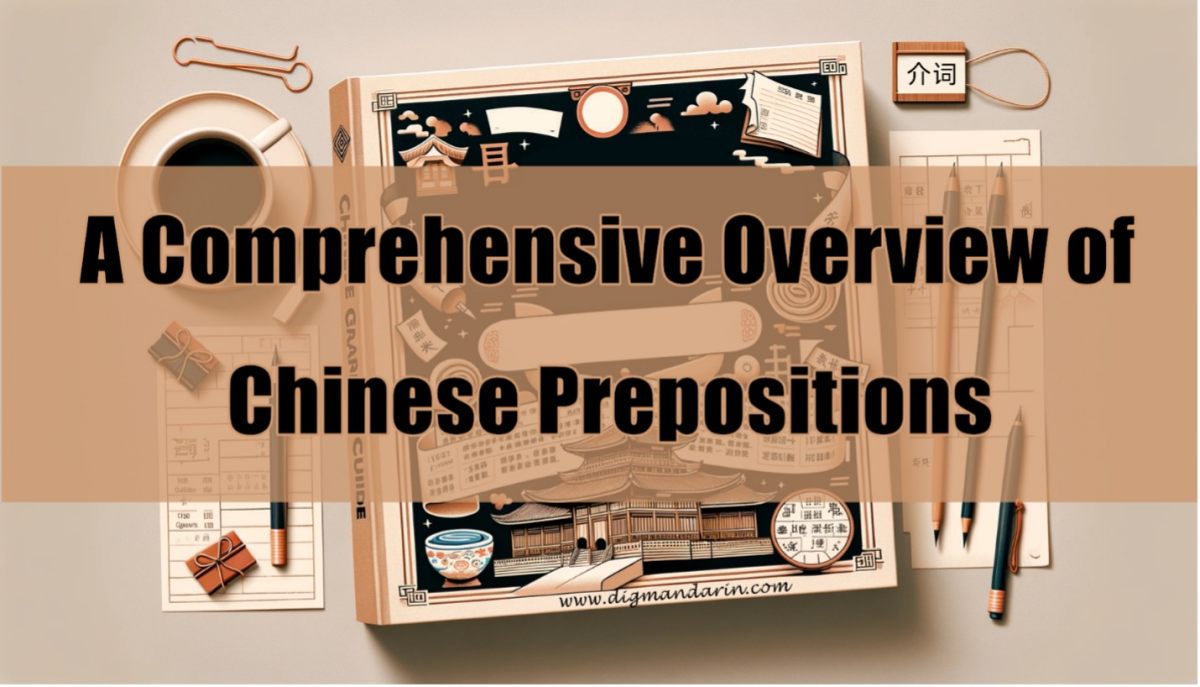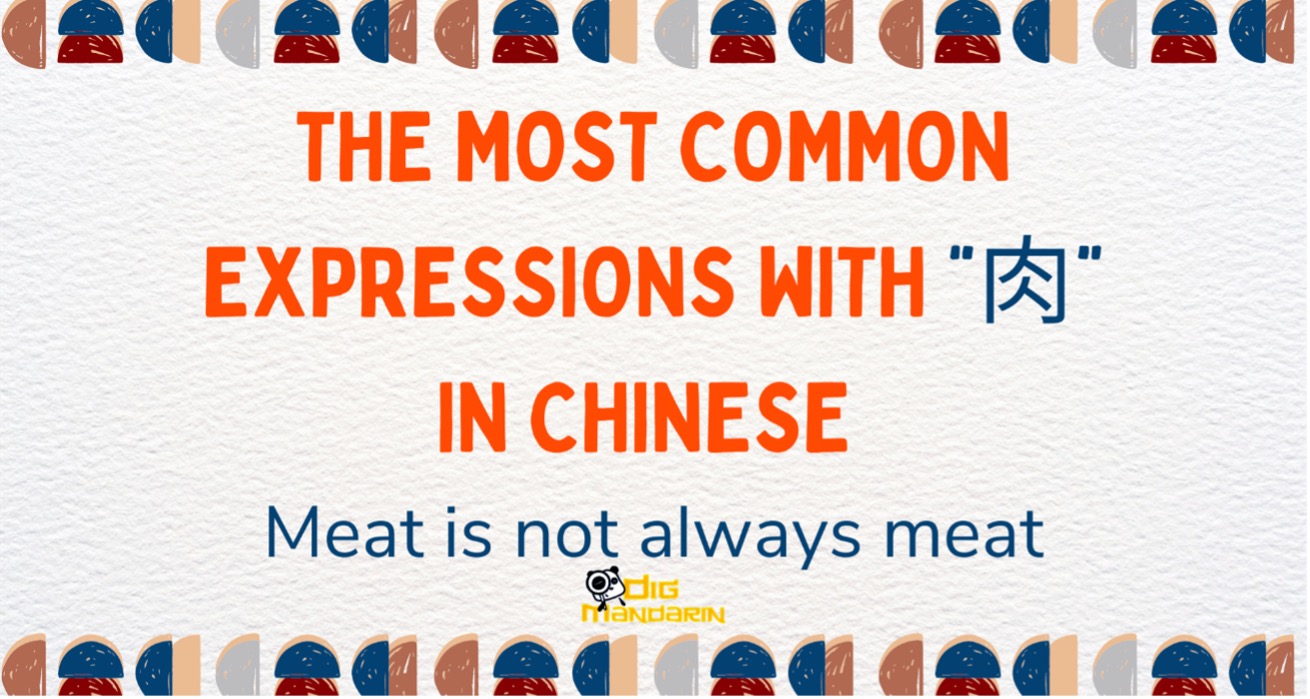“早饭吃完了”(The breakfast has been eaten) – Learn All About the Unmarked Passive Sentence in Chinese
Passive sentences make up a big and important part of modern Chinese. There are generally two types: Marked Passive Sentences and Unmarked Passive Sentences. We have talked about Marked Passive Sentences, as for Unmarked Passive Sentences, some learners may feel unsure about this kind of sentence structure and why it is important. Here are several reasons why this is worth studying and learning:
- In China, people use Unmarked Passive Sentence more often than Marked Passive Sentences, according to a research conducted by Wang Huai. If you are studying Chinese now, you must have heard people say things like: “饭做好了”(Fàn zuò hǎo le),“作业写完了”(Zuòyè xiě wán le ) ,“早饭吃完了。”(Zǎofàn chī wán le.) These sentences may sound strange since the more common Chinese sentence order is “Subject+Verb+Object”instead of “Object + Verb”, as shown in these examples. In truth, they are all Unmarked Passive Sentences, though shown in affirmative forms.
- You may find most textbooks won’t specifically mention Unmarked Passive Sentences, and that’s because they are distributed into specific parts of the book to teach you how to use it in daily life and to help you understand them through context. This is because Unmarked Passive Sentences are difficult to explain systematically, as there are many limits to its usage, which make it harder for learners to understand it clearly.
- Unmarked Passive Sentences have several functions in Mandarin: First, to emphasize the Patient/Noun. Second, to save time and to make the conversation more economical. Third, to continue, change and insert the topic being brought up. Fourth, to establish a new topic easily. For learners, using Unmarked Passive Sentences can help you sound like a native speaker since you will be applying this sentence structure to typical expressions naturally.
Basic Structures
So, we’re back to the question: ‘What is an Unmarked Passive Sentence?’ It is a type of passive sentence without obvious marks to indicate the Agent, and the Noun/Patient ,which is often in the first place of the whole sentence, cannot be disregarded in the sentence. However, the Agent, which is also known and inanimate in most situations, can be omitted depending on the context. Usually this pattern shows in an affirmative form, but implies a passive meaning. In fact, this has something to do with the natural Chinese thinking pattern.
This has two basic forms:
1. Noun(patient)+Verb+(other elements)
E.g.
作业做了。(Zuòyè zuò le.)
Homework was finished.
早饭吃完了。 (Zǎofàn chī wán le.)
The breakfast has been finished.
这张桌子擦得很干净。 (Zhè zhānɡ zhuōzi cāde hěn ɡānjinɡ.)
This table was swept clean.
鱼汤喝了两碗。(Yútānɡ hēle liǎnɡ wǎn.)
Two bowls of fish soup has been drunk.
The verb can also carry additional words like “已经”(yǐjīnɡ), “刚刚”(ɡānɡɡānɡ), “能”(nénɡ), “可以”(kéyǐ) and so on. When this is the case, it is allowed for there to be no other elements connected to the verb.
E.g.
这个苹果能吃。(Zhè ɡe pínɡɡuǒ nénɡ chī.)
This apple can be eaten.
这件事可以解决。(Zhèjiànshì kéyǐ jiějué.)
The problem can be solved.
Why is there no Noun connected to the given verb? There may be two possible reasons: one is the agent is known by speakers, so there is no need to say it clearly; the other is there is no specific Noun or Agent to refer to.
2. Noun(patient)+Noun(agent)+Verb+(other elements)
E.g.
书弟弟借走了。(Shū dìdi jiè zǒu le.)
The book was borrowed by young brother.
这个问题我们解决。(Zhèɡe wèntí wǒmen jiějué.)
This problem will be solved by us.
《哈姆雷特》我读过。(《Hāmǔ Léitè》wǒ dú ɡuò.)
“Hamlet” I’ve read.
In this structure, there is an Agent here. The doer of the action is shown a bit, but there are no specific marks to indicate this.
The relationship between the Passive Structure and the Active Structure
For better understanding, let us consider the Passive Structure’s ‘Noun(patient)+Noun(agent)+Verb’ and ‘Noun(patient)+Verb’ form when they are transferred to the Active Structure’s ‘Noun(agent)+Verb+Noun(patient)’. In Passive Structures, we just place the ‘Noun/Patient’ before the ‘Verb’ for stressing the Patient, and sometimes omit the ‘Agent’.
E.g. Passive Structure à Active Structure
- 作业做了(Homework was finished)→做了作业(Have done homework)
- 早饭吃完了(The breakfast has been finished)→吃完了早饭(Have had breakfast)
- 这张桌子擦得很干净(This table was wiped clean)→擦桌子擦得很干净(Wiped the table cleanly)
- 鱼汤喝了两碗(Two bowls of fish soup has been drunk)→喝了两碗鱼汤(Drank two bowls of fish soup)
- 消息已经通知了(The news has already been informed)→已经通知了消息(Have already informed of the news)
- 午饭刚刚做好(The lunch was done just now)→刚刚做好午饭 (Just now cooked lunch)
- 这个苹果能吃(This apple can be eaten)→能吃这个苹果 (Can eat this apple)
- 这件事可以解决(The problem can be solved)→可以解决这件事情 (Can solve the problem)
- 书弟弟借走了(The book was borrowed by young brother)→弟弟借走了书 (Young brother borrowed book)
- 《哈姆雷特》我读过(‘Hamlet’ I’ve read)→我读过《哈姆雷特》(I’ve read ‘Hamlet’)
On the other hand, Unmarked Passive Sentences can be made from Marked Passive Sentences, and though some can also be inter-converted, not all of them can.
E.g.
(1)他的名字写在名单上面了。(Tāde mínɡzi xiě zài mínɡdān shànɡmiɑn le.)
→他的名字被写在名单上面了。(Tāde mínɡzi xiě zài mínɡdān shànɡmiɑn le.)
His name was on the list.
(2)作业写完了。(Zuòyè xiě wán le.)
→※作业被写完了。 (Zuòyè bèi xiě wán le.)
The homework was done.
(3)他被大家误会了。(Tā bèi dàjiā wùhuì le.)
He was misunderstood by other people.
→※他误会了。(Tā wùhuì le.)
He misunderstood.
In Example 1, using or not using “被”(bèi) are both correct. But in Example 2 “被”(bèi) can’t be used, and the second sentence isn’t consistent with Chinese common language code. In Example 3, both sentences are correct, but they have different meanings in the subject being misunderstood. The first sentence expresses that “他”(tā) is the subject being misunderstood, while the second means “other people or other things” are the subject being misunderstood, and this sentence isn’t a passive sentence.
Summary
Finally, here is a summary of the Unmarked Passive Sentence, and the chart is as follows:
Besides the chart above, we also need to focus on some key points:
- Unmarked Passive Sentences have a very important relationship with natural Chinese thinking patterns and language habits.
- The Noun/Patient could be left out, but in most situations should be known even if not directly indicated.
- Not all verbs can be used in an Unmarked Passive Sentence.
- Not all Marked Passive Sentences and Unmarked Passive Sentences can be inter-converted.
- If you want to develop your Chinese further, then Unmarked Passive Sentences cannot be ignored. They are an integral part of the natural way the language is spoken and written.
We hope this article has helped you in your studies! If you have any questions, feel free to comment below!






This Post Has 0 Comments